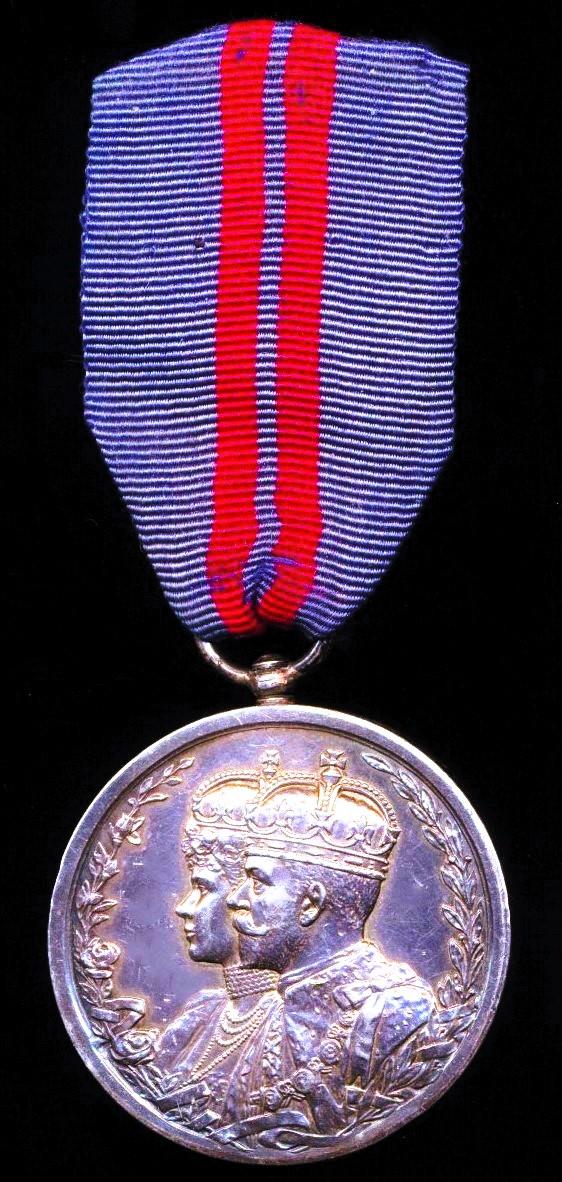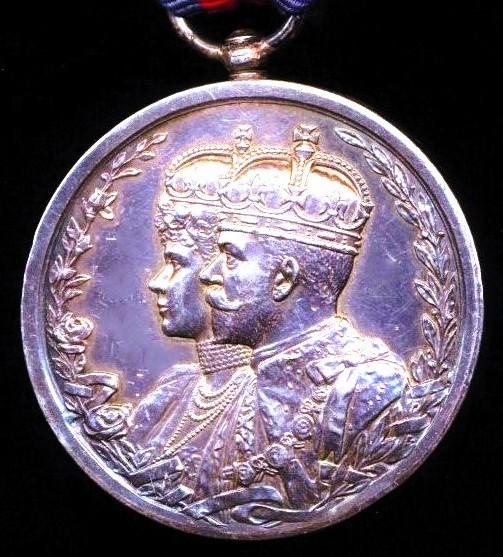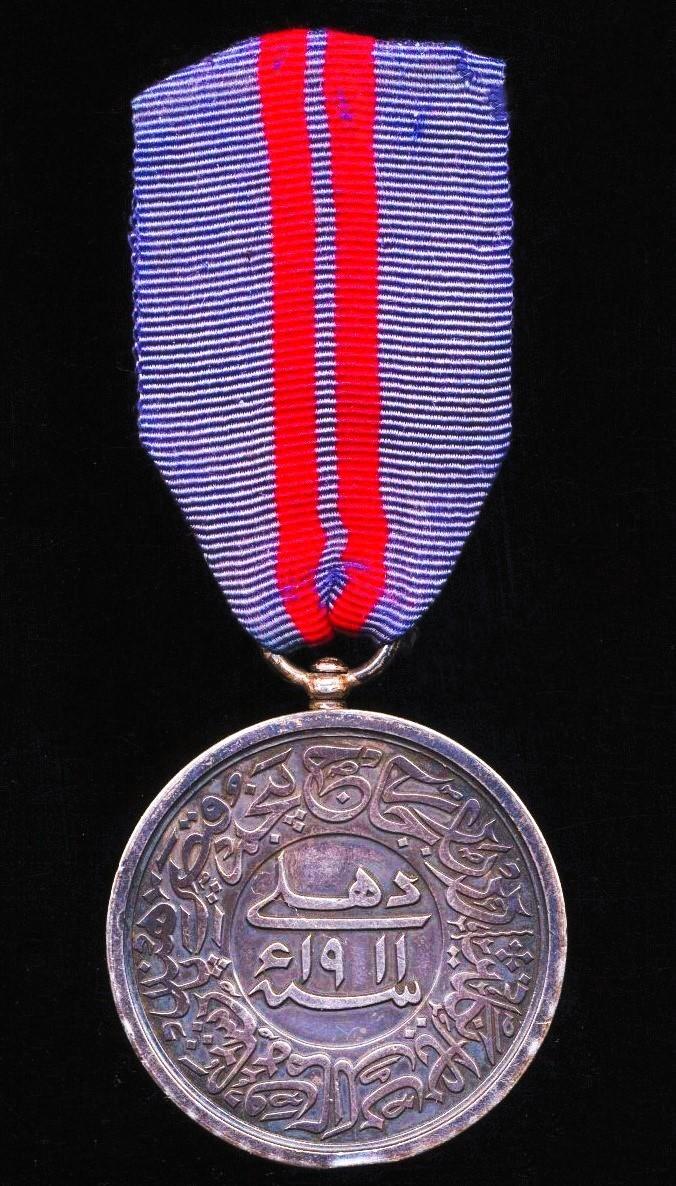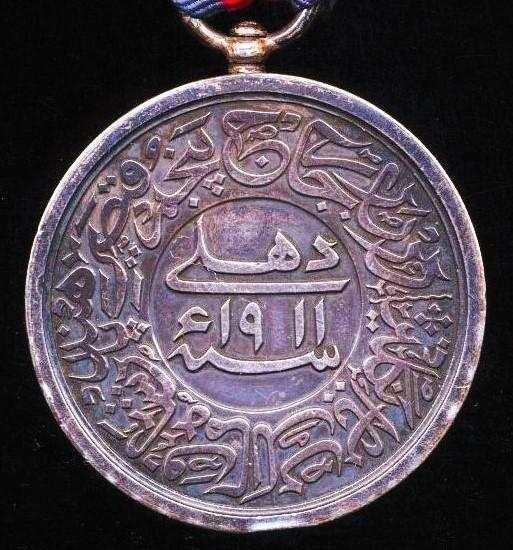Delhi Durbar Medal 1911. Silver issue. Regimentally impressed naming (822 L Cpl J. Beattie R.H.)
The medal is named in the correct regimentally impressed style
Killed-in-Action: The recipient is recorded as having been 'Killed-in-Action' in France, on 5 May 1915, during the Battle of 'Aubers Ridge' - a Victoria Cross action for 2/Black Watch
Medal(s) verification: The Delhi Durbar Medal confirmed as entitled, together with the recipients Great War campaign medals, on the respective medal rolls of the Royal Highlanders (Black Watch), cited below:
- Delhi Durbar Medal 1911. Silver issue: Ref WO 100/400
- 1914 Star & dated clasp: Ref WO 329/2460
- British War Medal. Silver issdue: Ref WO 329/1351
- Interallied Victory Medal: Ref WO 329/1351
John Beattie, the son of John & Harriet Beattie, was a native of St. Cyrus, Kincardineshire, Scotland, where he was born circa 1888. John was born into a farm workers family, and was the only son, albeit he had 5 x siblings, all sisters, viz Jessie, Maria, Cecelia, Harriet and Lizzie. Typical of farm workers in North East Scotland of this period, the family worked at several farm locations in the Kincardineshire, Angus and Forfar region in the years 1888-1915. John enlisted in the British Army, sometime prior to 1907. During his service in British India, John had the distinction of serving at the great imperial assemblage - the Delhi Durbar - held at Delhi in December 1911, and the only time a ruling British monarch visited British India - and whereat the 2nd Battalion Royal Highlanders provided the Guard of Honour at the Durbar ceremonies. The 2nd Royal Highlanders (Black Watch), received new regimental colours from the King Emperor, Geirge V, at Delhi, and silver Durbar medals were issued to 'selected' all-ranks of the regiment, including an award to John Beattie (the medal roll refers).
In August 1914, John was serving at Bareilly Cantonment, India, where his battalion was a constituent unit of the mixed Bareilly Brigade, Meerut Division of the Army in India. Meerut Division was mobilized for war service and embarked from India for France on 21 September 1914, with the 2nd Royal Highlanders disembarking at Marseilles, France, on 12 October 1914.
John Beattie served during the Great War with the2/Black Watch in the French theatre of war from 12 October 1914. He was 'Killed-inAction' on, 9 May 1915. On the latter date the Battalion were engaged during the Battle of Aubers Ridge, the Regimental History gives the following:
The Battalion had a particularly trying part to play on May 9th, as it had to relieve in the front line, in daylight and under continuous shell fire, a unit which with heavy loss had failed to advance; and it had to renew the attack against an enemy, not only unshaken by the previous attack, but obviously reinforced and ready to meet a second attempt. But the attempt was made with a determination and courage worthy of the Regiment...
About noon the Battalion received orders to relieve the 2nd Gurkhas on the right of the Dehra Dun Brigade.... The Batttalion was formed for attack in two lines... the assault was timed for 4pm. By about 3.55pm the front lines issued from the trenches and lay down awaiting the signal to charge. Colonel Harvey remained on the right, and ordered Major Wauchope to watch and report progress on the left of our line. Large numbers of Germans could be seen issuing from communication trenches and filing along the front, unaffected by our very weak bombardment.
The attack was met by a very accurate and extremely heavy rifle and machine-gun fire from the moment it began. A wide stream full of water and mud ran across No Man?s Land (which was about 200 yards wide), on the right within a few yards of our trench, on the left rather nearer the German than the British line. Some thirty bridges were supposed to have been constructed on our front, but few were existing when the Battalion made its attack. The greater number of the casualties fell close to or into this obstacle....
In the brief period the assault lasted the losses of the Battalion were: killed, 3 officers and 69 other ranks; wounded, 5 officers and 157 other ranks; missing (practically all killed close to the German trenches) 36 other ranks; total, 270 out of 450 engaged, or 60 per cent. The wounded and unwounded lay out in the open under fire till darkness enabled them to regain the trenches.?
Victoria Cross: Lance Corporal David Findlay of the 2nd Battalion was awarded the Victoria Cross for his gallantry during the above attack
The body of Corporal Beattie was never recovered from the battlefield, and his life and ultimate supreme sacrifice is now commemorated on two permanent memorials, vis the CWGC 'Le Touret Memorial' located at Pas-de-Calais, France, and on the Brechin War Memorial, located in Brechin, Angus. Scotland
Prior to his death in action, John had bequeathed his 'Soldiers Effects' and money credits with the British Army, to his father John, and each of his 5 x sisters
Condition: About EF
Code: 23764







